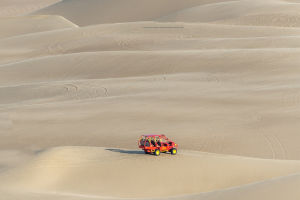As a quintessential outdoor pursuit, modern mountaineering traces its origins to Europe and boasts a history spanning over 200 years. Mountaineering, in its broadest sense, transcends limitations regarding mountain altitude, climbing methods, or equipment usage.
Mountaineering means using specialized equipment and techniques to climb peaks of a certain altitude range. Climbing snow-capped mountains, especially those above 8,000 meters, has an average mortality rate of more than 10 percent.
Climbers may encounter frostbite and temperature loss, avalanche slides, and fatal risks such as organ failure due to high-altitude illness. The danger of death, however, cannot stop humans from going to the mountains but rather drives them to explore.
When the reporter asked British mountaineer George Mallory about a hundred years ago why he risked his life to climb Everest, he said, "Because the mountain is there."
Not long after leaving this legendary quote, Mallory and his teammates disappeared deep into the snowy mountains when they launched their second challenge to Everest. It was not until 75 years later, in 1999, that his body was found by an American climbing team at 8,170 meters on the north slope of Everest.
Over the past few decades, McFarlane has witnessed mountain disasters affecting victims around the world. They are either buried in mass graves at the base camp or, if they passed away at higher altitudes, their remains might have been left behind with objects like names carved into boulders or flowers wrapped in cellophane.
Indeed, for any climber, the objective of climbing is not only to reach the summit but also to return safely. In 2003, Jimmy and his teammates ascended the North Face of Everest, narrowly surviving an avalanche. A week later, they made a second attempt, acknowledging the looming threat of another avalanche. After 12 hours of climbing, unable to find shelter, they made the difficult decision to abandon the ascent. Subsequently, an avalanche occurred. Despite the lingering regret, Jimmy remained convinced that turning back was a prudent choice for their safety.
In September of last year, tragedy struck as North Face contract athletes, climbers Hilaree, and her climbing partner Jim Morrison, ventured to summit the world's eighth-highest peak, Manaslu Peak. During the descent, Hilaree tragically fell from the south wall of Manaslu Peak, succumbing to an avalanche slide.
Every climber has faced death up close and personal at some point. The closest the North Face signed athlete Dazuo came to an avalanche was on the summit descent of Dasetang in 2016.
This is a high mountain located in Dayi County, China, at an altitude of 5,353 meters. At that time, he was confronted with an eye on the overwhelming snow that came over him like a wall.
In an instant, he was wrapped in the snow, and his body tumbled uncontrollably down the mountain. We don't know how long it took, but the violent tumbling suddenly stopped. He was still alive, lying on a rock, wearing a helmet that had cracked on impact.
However, his curiosity about the unknown drew him to keep setting out to explore. The mountains could always satisfy his infinite curiosity. In the mountains, there is always something new to discover.
The snowy mountains are the stage where the sun's light changes rapidly throughout the day, and every moment captured by humans is eternal and new.


